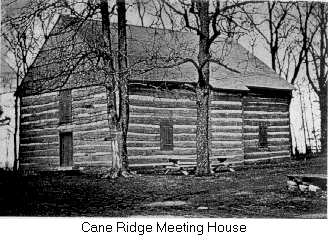

Summer Term, 2002
Professor Samuel Pearson
This course is a survey of the character and role of religious institutions, ideas, and practices in American history. The primary text is Pilgrims in Their Own Land by Martin E. Marty. This volume will provide a structure for the course and a general introduction to the topic. Supplementary essays will be assigned from Religion in American History by Jon Butler and Harry S. Stout. Both of these volumes are available in textbook rental. Lectures will complement text and discussion items and address other aspects of the course topic.
The focus of this course is on the history of religion understood in the broadest sense of that term and on its cultural and social as well as cultic, theological, and institutional dimensions. The objective of the course is to enable students to increase their understanding of the actual functions of religion in American society as well as their knowledge of major historical figures and events in American religion. Students completing the course should have an understanding of the major religious traditions that have influenced the development of American history as well as the ways in which church and state have related through history. They should be able to give a coherent explanation of the historical development of religious ideas, institutions, and practices from the colonial era to the present time. They should know something about the history and characteristics of religious movements such as Adventism, Catholicism, civil religion, creation science, ecumenism, evangelicalism, fundamentalism, Judaism, modernism, Mormonism, Native American religion, Orthodoxy, pentecostalism, pietism, primitivism, Protestantism, Puritanism, rationalism, transcendentalism, and utopianism. They will be expected to have at least a passing knowledge of the ways in which American religions and American history have shaped one another and of explanations for American characteristics that reveal religious influences.
Students are expected to complete all assigned readings in order to understand the lectures and participate in the classroom discussions. Two examinations will be scheduled. Each student will present a review and critique of an essay from Religion in American History in class and then submit her or his review in writing. A second written review will also be required. Grades will be determined on the basis of hour and final examinations (35% each), class presentation (10%), and papers (10% each). Grades on papers will be lowered if the papers are submitted late. Students are expected to be present for class meetings except when excused. Up to three one-hour absences will be excused; beyond that number, each hourly absence will lower the course grade by 1%.
The class meets on Monday, Wednesday, and Friday from 8:00 to 10:50 am in PH3313. My office is in Peck Hall, room 0216, my telephone extension is 3570, and my e-mail address is spearso@siue.edu or pearsonsm@earthlink.net. My office hours are from 10:50 to 11:30 Monday, Wednesday, and Friday and by appointment. Students should contact me promptly if they are experiencing difficulties. Please do not leave messages on my office telephone; it is shared by many faculty, and I may not receive all such messages. E-mail is far more reliable.
May 20
Introduction to the Course
Methodology for Study of Religion in a Pluralistic Society
Religions of Native Americans
Film: Seasons of a Navajo
Marty, ch. 1
May 22
Conqueror versus MissionaryMay 24
Sixteenth Century European ReformMay 27
Memorial Day; No ClassMay 29
Colonial Establishments of Religion: PuritanismMay 31
FIRST PAPER DUEJune 3
FIRST EXAMINATIONJune 5
The Second AwakeningJune 7
African-American ReligionJune 10
Film: The Old BelieversJune 12
Religions of HealingJune 14
SECOND PAPER DUE
The Social Gospel and Fundamentalism
New Religious Movements of the Inter-War Years
Film: The Holy Ghost People
Marty, ch. 17
B&S, 20 and 21
June 17
Social Conflicts and Religious ResponsesJune 19
Suburban Captivity of the ChurchesJune 21
FINAL EXAMINATION
Your papers should be written carefully with appropriate attention both to content and to style. I expect you to read the assigned essays in the Butler and Stout volume as well as others distributed in class carefully. As you read, look up any terms you do not understand. Also outline each article and be sure you understand the author's main points. Then write a review in which you make clear the point of view of the author as well as how the author's views are complemented or challenged by information in the textbook or the lectures. How does the author argue for her or his position? What do you consider to be the strengths and weaknesses of this position and why? Each of your papers should be at least three double-spaced, typewritten pages; but none should exceed six pages in length. Above all, if you have questions, ask. I do not expect perfection, but I do expect careful attention to historical detail and to the mechanics of composition. If you do not understand basic rules of scholarly writing, familiarize yourself with the relevant chapters in Kate Turabian's A Manual for Writers of Term Papers, Theses, and Dissertations.